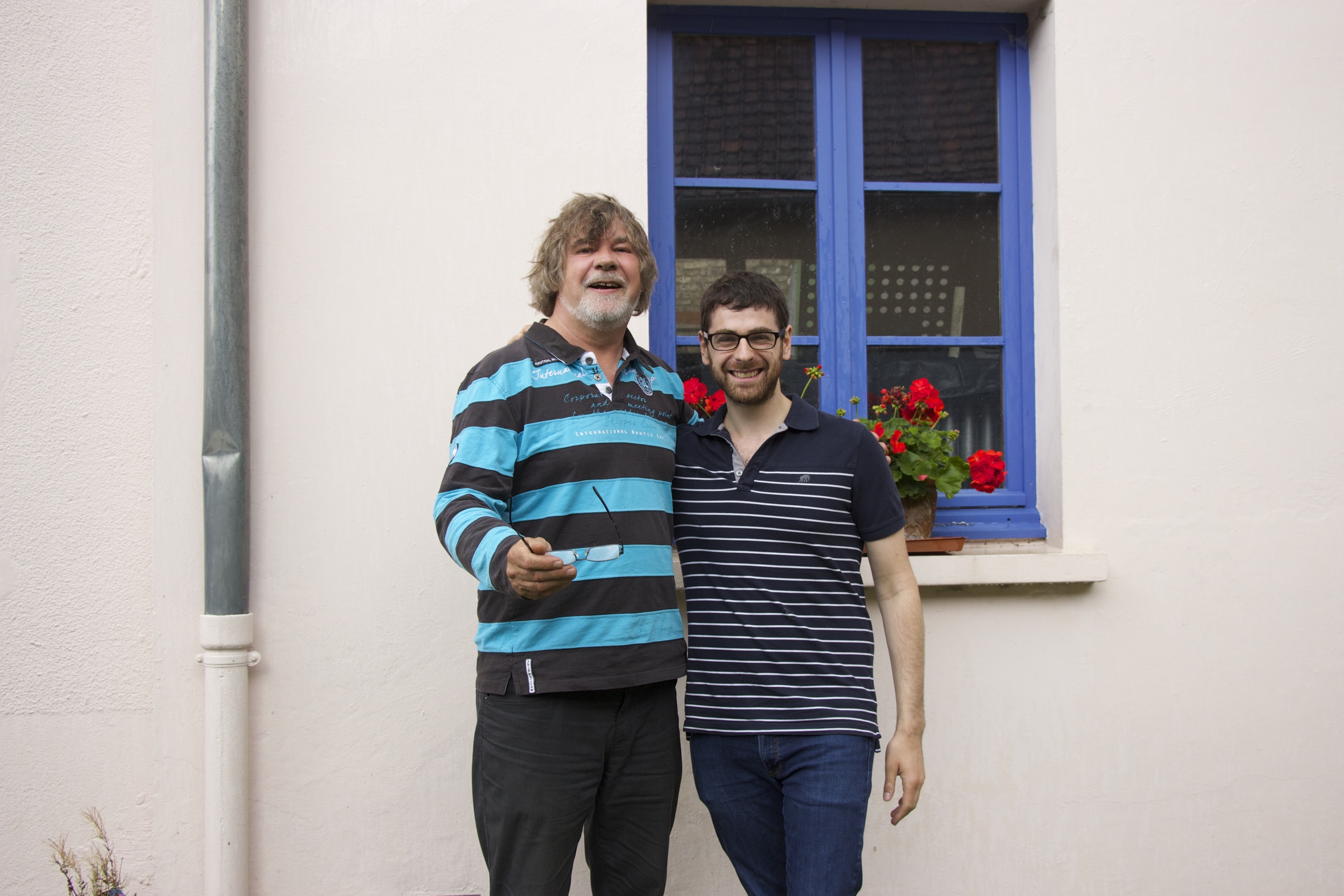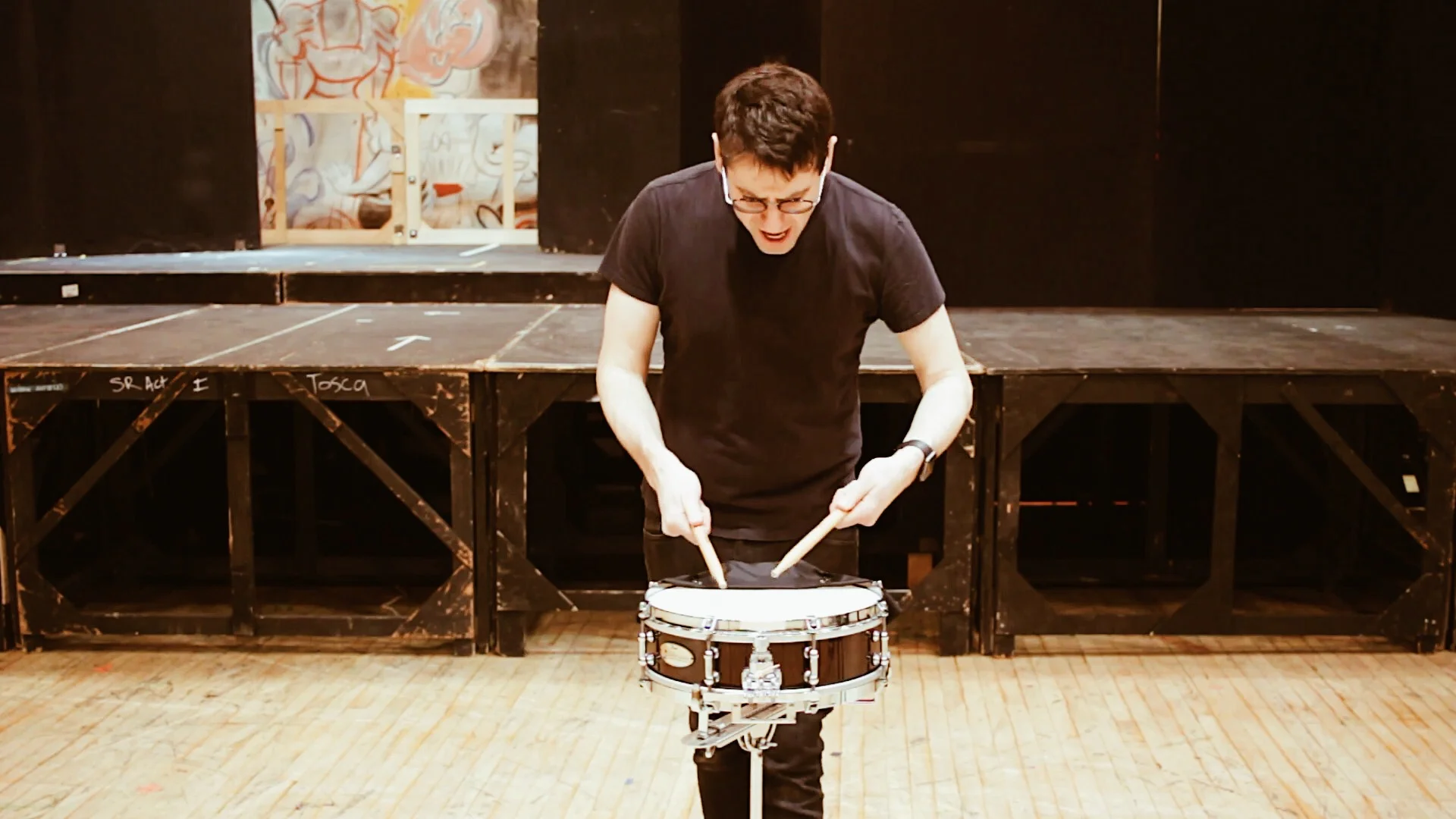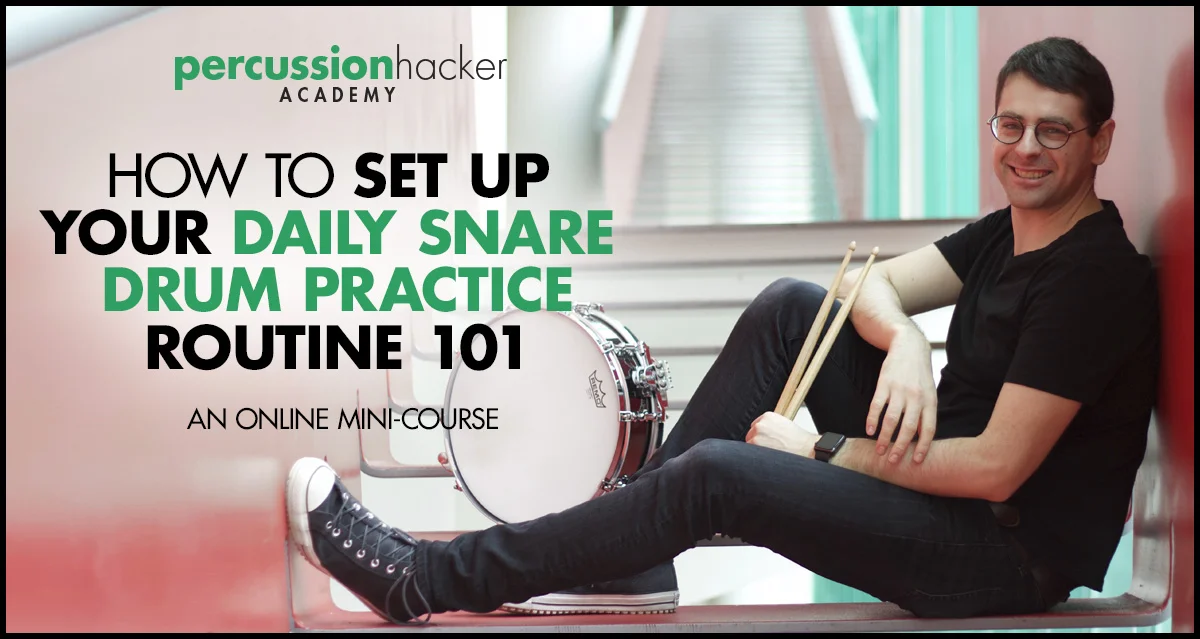welcome to day 5 of the #12daysofdelécluse. yesterday we announced the delécluse starter stickings, and i was overwhelmed by the massive response! thanks, everyone. today, we turn to didier vérité, a disciple of delécluse and percussionist in the paris opera. my interview of didier took place in amiens, france, and was the 2nd and penultimate stop in on my 'caisse-claire crawl,' on my way to finding jacques delécluse.
introduction
didier vérité is many things: a percussionist in the paris opera, a student and scholar of delécluse and french snare drum, a fisherman, a teacher, an amateur apple cider brewer, a pet bird owner, and so much more.
actually, he’s more than all of those things. he lives for figuring things out and explaining them, whether he was explaining the evolution of written snare drum notation or the ways that different regional french apple-based alcoholic beverages are cultivated. when i went to visit him, after a two hour train ride outside of paris, i realized very quickly that neither of us spoke a word of the other’s language. everything was interpreted through his wife murielle, who is a classical and colombian harpist. he gave me, in three short, hazy hours, what amounts to a guide to playing delécluse.
he spoke with an extremely high regard for delécluse, who was his teacher for three years at the paris conservatoire. didier considers delécluse, his composition, and his concept of snare drum to be a major turning point in the evolution of snare drum throughout the last hundred years. our discussion spanned the modern history of french snare drum, from the tambour of the late 1800’s, which had all left hand strokes written below the staff and all right hand strokes written above, to the modern caisse-claire.
i was walked through a laundry list of tips on how to play delécluse correctly. i've turned them into an infographic - the '14 guidelines for playing delécluse.' the music of delecluse and french caisse-claire playing comes steeped in regional tradition, from the military traditions in napoleon’s army to the present-day. these deal with crescendos, ornaments, dynamics, inflections, ways to practice, and other helpful nuggets of info. here's the interview and the list of guidelines for your pleasure.
RK: what’s your post in the paris opera?
DV: my position is called “2nd timpani solo playing percussion.” we have different divisions of responsibility - there are spots for only timpani (the solo timpanists), timpanists who play percussion, percussionists who play timpani, and only percussion. then there’s the unique position that delécluse had - a pianist who plays percussion.
RK: tell me about delécluse.
DV: before i tell you about jacques, i need to explain what happened in the world of snare drum before delécluse. in france, the caisse-claire is what we think of as the modern snare drum. before the caisse-claire, we had the tambour. it used to be called the ‘napolean tambour.’ they played these drums in napolean’s army. music was often passed down orally, not written. it was a bigger drum than the caisse-claire. once it transitioned out of the army, it became slightly smaller. when music was written down for tambour traditional, it was written in two separate lines - one line for the left hand and one for the right.
RK: that must be why flams are written with stems in two directions in french music.
DV: exactly! notes with stems up were for one hand and stems down were for the other - this tradition is still evident in the written flams on caisse-claire. in the army, the drummers had to play synchronized with each other, which is why this tradition started.
RK: then what happened?
DV: then, caisse-claire came into existence, and it was even smaller. mr. rene haniko, who held my post in the paris opera before me, wrote down all of the oral tradition of tambour.
RK: got it. he wrote for tambour traditional?
DV: yep. he was the first to write it on one line. this was a major breakthrough for snare drum in france that made haniko famous, and it was carried on by his paris opera contemporaries, felix passerone and robert toute. they were both major teachers, and felix passerone was the teacher at the paris conservatoire before delécluse. passerone made percussion what it is now in france. for instance, he introduced 4-mallet playing, and he wrote a lot of music. they were all in the paris opera together, and then jacques delécluse joined them.
RK: wow, that sounds like an epic section.
DV: absolutely. those guys were all revolutionary players and thinkers, and very strict as teachers.
RK: what was one rule that was strict?
DV: well, when i was a student, it was forbidden to buzz. i had to play very fast double bounce rolls. the reason for this was to create a very clean, clear quality of sound called “roulement perle,” which translates to “rolling pearls.” it means that each sound in the roll has a very clear and distinct, like a pearl. “tick, tick, tick.” consistent and fast. after my generation, people started playing buzzes.
RK: when did that change?
DV: it originally changed around the time of bartok. you can’t play bartok with roulement perle. it’s idiomatic - bartok needs buzz rolls. the way it’s evolved is a mix of the two styles - buzz and roulement perle. you can still hear the individual notes when i play a buzz roll. i like to be versed in many styles of rolls and not always sound the same. one more difference between caisse-claire and tambour is the flam. tambour has a wide flam, where each note is separate and distinct. all the ornaments on tambour are wider, while caisse-claire are more crushed, and can almost sound like one note.
RK: how did delécluse get into percussion?
DV: ok. his father was a clarinet player named ulysse delécluse. ulysse said to jacques, “jacques, you must play percussion and you must improve it. it’s the future, percussion. you are a pianist, but you’ve got to play percussion because of its future in music.” so, jacques played percussion. he wrote all his snare drum music, as you know, on one line. he didn’t want people to be obligated to play left or right. he thought it was important for students to have a choice in the matter. he also wanted the rolls to be played crushed, although with no tension. tension is a no-no in french snare drumming.
RK: i see. so, it’s not a double but it’s not a hard-crushed buzz?
DV: right. the bounces aren’t measured either - you can add one or take one away. in france you start by learning double bounce rolls. then you learn buzzes. now you have different sounds to work with - the old tradition or the new - and you can play both. robert toute, the other member of the paris opera percussion section while passerone and haniko were there, was a proponent of playing in the center of the drum for rolls. he would play each buzz starting near the edge and end in the center - a wide path for each buzz stroke. you can see that the roll has evolved a long way. there are some pieces, like coppelia by delibes, which traditionally use double stroke rolls, while other pieces, like music by tchaikovsky, generally are played with buzz rolls. delécluse wrote with intentional freedom - you can play it like you want. he was the first to offer this decision to the player, whereas earlier teachers were very strict.
RK: was freedom a hallmark of delécluse’s writing?
DV: yes, absolutely, but about some other things he was very strict. for instance, his detailed dynamics are very important to follow. when he wrote a decrescendo, you have to get to the bottom dynamic at the end of the decrescendo. you don’t just drop down to nothing and then come back up to the next dynamic - the decrescendo only goes as far down as the next dynamic. same for crescendo - you don’t start a crescendo by dropping down - you start at whatever dynamic you’ve been playing and then start to crescendo. there’s a lot of nuance written into the music, and you have to find a way to be precise.
RK: i see. what was delécluse’s effect on percussion?
DV: percussion evolved a lot because of delécluse. one thing that he changed was flams. before delécluse, on the tambour, flams were always forte and the other notes were softer. delécluse said that they should all be the same dynamic. that was one of the purposes of étude #6 - the notes are all the same and the flams aren’t accented. when he wants more, he writes it. another thing that he always harped on, and he was the first, was how to get from something loud to a subito piano. you have to add a little stop in the transition, otherwise the subito piano gets lost. there are certain things about delécluse’s style that were invaluable and added a lot to the art of percussion.
RK: tell me a little bit about when you were a student.
DV: first i studied in amiens. i had to work alone a lot. while i was a student, there weren't a lot of outside ideas. now you have a lot of teachers all over europe or the world, and online. but then, you just have your teacher, your colleagues, and yourself. it was pretty closed-minded. i had to go outside of amiens to learn new styles and ideas.
RK: what was studying with delécluse like?
DV: one notable thing was that when you played something for him, even if it was his own music, he would say very little at first. sometimes he would only give you a one word comment.
RK: how did you know what to do?
DV: he tried to let the student guide themselves, to find their own musical personality without making restrictions. but if you were really out of line, then he’d tell you.
RK: got it. what kind of drum did he want to hear his pieces on?
DV: again, he gave a lot of freedom with a choice like this. you could play the studies with a small snare drum, like a piccolo, but you can also play it on a big drum. it’s up to you.
RK: ok, let’s get more specific. etude 2 is in 3/4, but the first measure is written in 6/8. how should you phrase it?
DV: it should all be in 3/4, and phrased like a syncopated rhythm in 3/4. delécluse didn’t say a lot about this - he would let the student figure out what to do after working through a problem.
RK: how about the ostinato in etude 1?
DV: no, show the phrases. what’s important is to show the 3 figures.
RK: and how do you perform the rit?
DV: just poco, like it says. most of the rit happens at the end. <plays étude 1 from m. 44 and doesn’t slow down until the end of the rit. plays to the end of the piece.>
RK: i noticed that you also wait until the end of a crescendo to do the bulk of the dynamic increase. is that delécluse style, french style, or didier style?
DV: that’s a delécluse style. he asked his students not to make much change and then, at the end of the crescendo, do a dramatic increase.
RK: if you could tell the percussion world one thing about delécluse, what would it be?
DV: throughout his career, delécluse changed his ideas. what he said to me during my time as a student was a long time ago. it’s very old. perhaps he’s changed his mind. this information is important, but not definitive. like all of us, he can change. in fact, one person’s experience with delécluse might have been very different from another’s. we aren’t photocopies of each other - it’s very rich to have differences.
RK: what kind of drum did you use when you were studying with delécluse?
DV: i’ll show you exactly what i used. it was a rodgers drum with the same tension on both sides. it also has the same sound in the center of the drum or the edge. it’s a 16 centimeter drum (6.3 inches).
RK: i see. do you play sitting down or standing up?
DV: when i practice i sit down. but when i perform i stand up.
RK: do you have any tips to learning the really hard parts of the delécluse études? for instance, how do play the crazy rhythms in #8?
DV: glad you asked. i work a lot on doubles - specifically making the 2nd note louder than the first.
RK: how can students work on getting a ‘rolling pearl’, or a roulement perle?
DV: i have a 5 step process to getting a roll. students can work on each step, one at a time.
1. play alternating single strokes… r, l, r, l
2. play slow doubles… r, r, l, l
3. play fast doubles… rr, ll, rr, ll
4. play alternating single buzzes
5. play fast buzzes
then go backwards through the list to number 1. you should get so proficient at these steps that the transitions between them become very smooth. stay on one step for a long time and transition carefully. it takes a while to get to the fast buzzes. you shouldn’t hear the transitions. also, practice these at different dynamics, from piano to forte. keep the same hand position from one dynamic to the other. that’s not french style - that’s my style.
again, the rolling pearl is a very crushed roll, but you can still hear all the notes. if it’s so crushed that you can’t hear the notes, it’s too crushed.
RK: is that a delécluse thing, or a general french percussion thing?
DV: this is a french thing - in the french school of playing. in an orchestra you have to play it like this - pearly - all the time. clear and transparent.
RK: question about étude 9. during the long roll, do you crescendo above the following piano dynamic or only up to piano?
DV: above. it’s because it’s an important musical moment just before the coda.
RK: how do you stick the crescendoing 32nds in the last line of étude 9?
DV: the first two 32nds are alternating and then you double.
RK: one last tip about étude 9?
DV: you should play a big climax in measure 22, even though it’s not written.
RK: ok, here’s a question that’s near and dear. what do you do during tacets in the opera?
DV: haha! word games…coffee…practicing. and you?
RK: same.
<didier’s wife, murielle, a harpist, chimes in>: it’s a peculiarity of percussion and harp.
RK: that’s true. did you ever play any music besides classical percussion or opera?
DV: yep. in the amiens conservatory, there was a big band. i played trumpet. i also played drumset in a pop group. i’m not that great at drumset… it’s just for fun. my specialty is opera orchestral playing.
RK: what do you do besides percussion?
DV: well, i like fishing. i put fish in the pond at my house in amiens. i grow tomatoes, legumes, and apples. right now i’m trying to figure out how to make hard apple cider.
RK: hard apple cider?!
DV: well, i’m still learning how to make it. i have this machine. first you press the apples and make apple juice. then you bottle it, and it ferments like champagne. it takes about two months.
<murielle>: we like it. we make cider in this region. like normandy or botania, it’s famous for its apples.
DV: although - there’s another apple liquor that we don’t make, called calvados. it’s very tasty, but it’s not legal to distill it. in old times families would make it, but not anymore.
released on october 26th, rob knopper’s album, delécluse: douze études for snare drum, celebrates the fiftieth anniversary and the first-ever recording of snare drum’s most influential and elaborate composition. featuring 11 camera angles, rob knopper’s CD+DVD set was recorded in high-resolution audio and video in miami beach’s new world center.
want to see my complete snare drum setup?
here’s my 8-piece snare drum setup, including every piece of gear and accessory you'll need. (and it's totally audition-ready, too.)
















the snare drum seems like it could be the most boring instrument on earth. regardless, you still have to sound as musical as any violinist or oboist or trumpeter.
in today's video, i'm showing you 7 ways you can express phrasing and musicality on the snare drum.